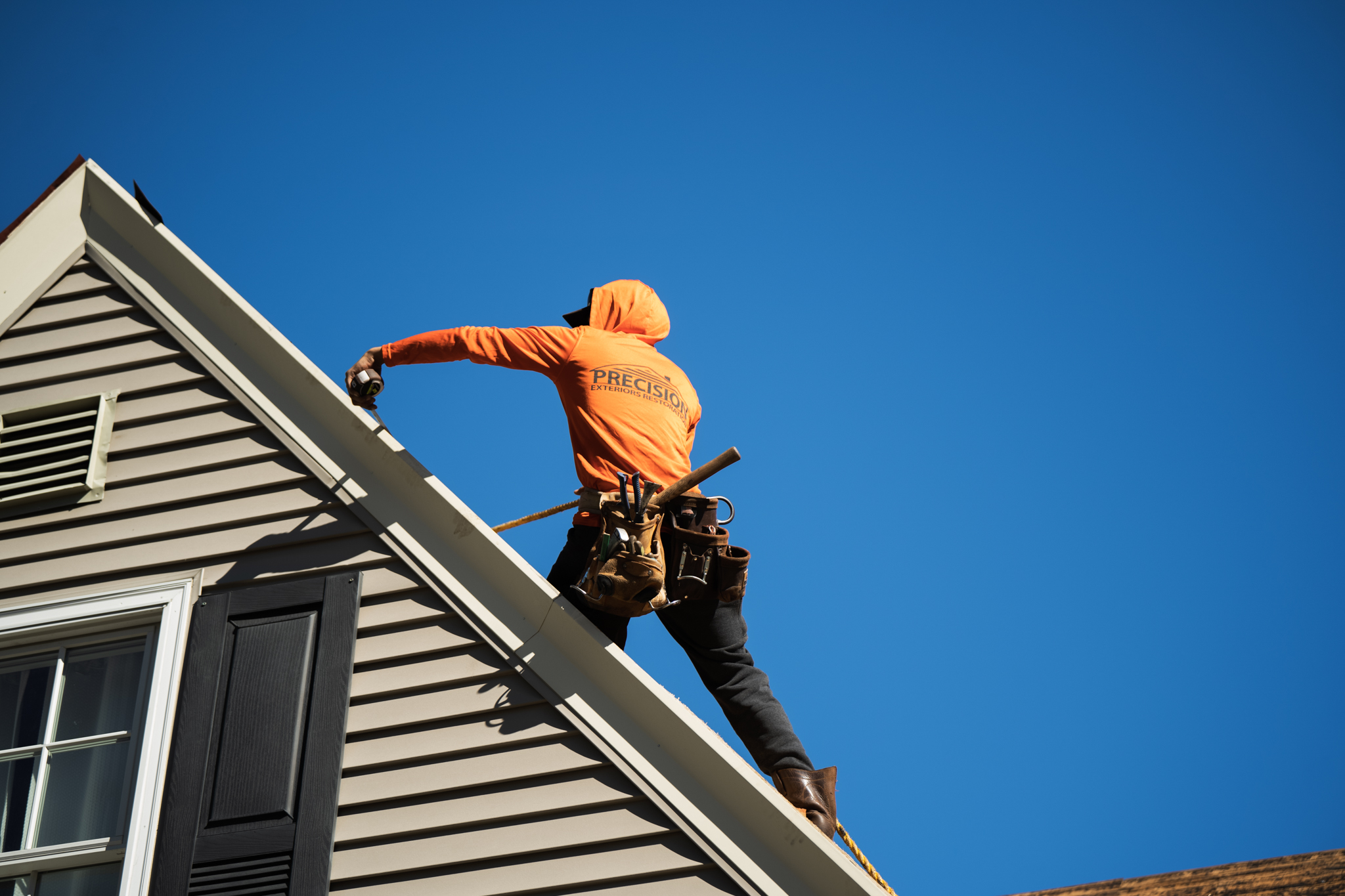Maintaining your roof and gutters is essential for protecting your home from water damage and ensuring its longevity. Regular inspections and timely repairs can prevent costly issues such as leaks, mold growth, and foundation problems. Roof and gutter maintenance is not just about aesthetics; it’s about keeping your home safe, dry, and comfortable.
In this ultimate maintenance checklist, we’ll walk you through the key tasks you should perform to maintain your roof and gutters year-round.
Why Roof and Gutter Maintenance is Crucial
Roof and gutters work together to protect your home from water damage. The roof shields your house from the elements, while gutters channel rainwater away from your roof, walls, and foundation. When either system fails, it can lead to leaks, flooding, mold, or even structural damage.
- Prevent Water Damage: Clogged gutters or a leaky roof can cause water to back up, leading to damage to your ceilings, walls, and foundation.
- Avoid Costly Repairs: Regular maintenance helps catch small issues before they turn into expensive repairs.
- Increase Property Value: Well-maintained roofs and gutters contribute to the overall curb appeal and value of your home.
Seasonal Roof and Gutter Maintenance Tasks
Spring
Spring is a great time to inspect your roof and gutters after the winter months. The thawing snow and rain can cause ice dams or debris buildup in the gutters.
- Inspect the Roof: Check for any missing, loose, or damaged shingles. Look for signs of mold, moss, or algae growth, especially in shady areas.
- Clean Gutters: After the winter season, remove any debris such as leaves, twigs, and dirt. Check for blockages or clogs in the downspouts.
- Examine Flashing: Inspect the flashing around your chimney, vents, and skylights for any damage or rust.
- Check Roof Vents: Ensure that roof vents are clear of debris to allow proper ventilation, which helps prevent attic moisture buildup.
Summer
During the summer, it’s important to ensure that your gutters are clear of debris and that the roof is still in good condition after the spring storms.
- Clear Gutters and Downspouts: If you have trees near your roof, ensure your gutters are free from leaves and debris. Check that downspouts direct water away from the foundation.
- Check for Granule Loss on Shingles: Look for granules in the gutters, as this could indicate that your shingles are wearing out.
- Inspect for Leaks: Look for any signs of leaks or water spots inside your attic or ceilings. Summer rains can often expose roofing problems.
- Trim Overhanging Branches: Overhanging branches can damage your roof and gutters. Trim them back to avoid unnecessary debris and wear.
Fall
The fall season can be one of the most challenging times for roof and gutter maintenance due to the shedding of leaves and the possibility of severe weather.
- Clean Gutters Again: Clean your gutters thoroughly after the leaves have fallen to ensure they are free of debris before the winter.
- Inspect Shingles and Roof Structure: Check for any loose or damaged shingles, particularly after heavy winds or storms.
- Check Attic Insulation: Ensure your attic is well-ventilated and properly insulated to prevent ice dams and heat buildup that can damage your roof.
- Prepare for Winter: If you live in an area that experiences freezing temperatures, inspect your roof for potential ice dam formation. Check for signs of leaks or cracks where ice could build up.
Winter
While winter maintenance is mostly about preparing for the cold, there are still a few tasks to monitor.
- Inspect for Ice Dams: Ice dams form when snow melts and refreezes at the eaves of the roof. Inspect your gutters for ice buildup, as it can cause water to back up and leak into your home.
- Remove Snow and Ice: If snow accumulates on your roof, use a roof rake to remove it safely. Avoid climbing onto the roof in icy conditions, as it can be dangerous.
- Check for Leaks: If you notice any leaks inside your home, particularly around the roofline or ceiling, address them immediately to prevent further damage.

Monthly Roof and Gutter Maintenance
In addition to seasonal maintenance, there are certain tasks that should be performed monthly to ensure your roof and gutters are functioning properly.
- Check for Debris: Every month, inspect your gutters for leaves, twigs, or other debris that could cause blockages. Use a ladder to check your roof for fallen branches or debris that could cause damage.
- Look for Signs of Wear: Examine your roof for loose shingles or flashing. Check for visible signs of damage or leaks, especially after storms.
- Check Downspouts: Ensure that water is flowing freely through your downspouts. Use a hose to test if water can pass through easily.
- Monitor Mold or Moss Growth: Mold or moss growth on your roof can trap moisture, leading to deterioration of your shingles. Look for any signs of growth, particularly in shaded areas.
Inspecting Gutters and Downspouts: What to Look For
Gutters and downspouts are essential for diverting water away from your roof and foundation. Here’s a checklist of what to look for during your gutter inspections:
- Clogs and Blockages: Make sure gutters are free from debris like leaves, dirt, and twigs. Clear any blockages to ensure proper water flow.
- Sagging or Loose Gutters: Check for sagging or gutters that are pulling away from the house. Tighten loose brackets or replace damaged ones to ensure gutters are securely attached.
- Downspout Function: Ensure that downspouts are clear of blockages. Water should flow freely out of the downspouts and away from the home’s foundation.
- Leaks and Holes: Look for signs of leaks in the gutters, which could lead to water damage. If you notice any holes or cracks, repair them promptly.
- Check for Rust or Corrosion: If your gutters are made of metal, look for signs of rust or corrosion, which can weaken the structure of your gutters.
Roof Inspection Checklist: Key Areas to Examine
Your roof is the first line of defense against the elements. Here’s what to check during a roof inspection:
- Shingles: Check for missing, cracked, or curled shingles. Replace any damaged shingles to prevent leaks.
- Flashing: Inspect the flashing around chimneys, vents, and skylights for signs of rust or damage. Flashing is crucial for preventing leaks at joints.
- Gutter Edges: Ensure that gutters are securely fastened to the roof edge. If there are any gaps, they could cause leaks.
- Ventilation: Make sure your attic vents are not blocked. Proper roof ventilation helps prevent moisture buildup and ice dams.
- Roof Valleys: Check roof valleys (where two roof slopes meet) for debris or damage. Valleys are vulnerable areas where water flows, so keep them clean and well-maintained.

When to Call a Professional
While many maintenance tasks can be handled by homeowners, certain issues may require a professional. Call a roofing or gutter expert if:
- You Spot Significant Damage: If you notice extensive damage to shingles, flashing, or gutters, it’s time to call in a professional for a thorough inspection.
- Your Gutters Are Clogged Beyond Reach: If you can’t access your gutters or downspouts safely, a professional can perform the necessary cleaning and repairs.
- You Need Gutter Guard Installation: Gutter guards can help reduce clogging, but they require proper installation, which is best handled by a professional.
- You’re Concerned About Ice Dams: Ice dams can cause severe damage if not addressed quickly. A roofing expert can inspect and recommend the best course of action.
Conclusion
A well-maintained roof and gutter system is essential for the protection and longevity of your home. By following this comprehensive checklist, you can ensure that your roof and gutters are working efficiently year-round. Regular inspections, cleaning, and prompt repairs will help prevent costly damage and keep your home safe from the elements. Whether you handle the maintenance yourself or call in a professional, staying on top of roof and gutter care is one of the best ways to protect your home.

